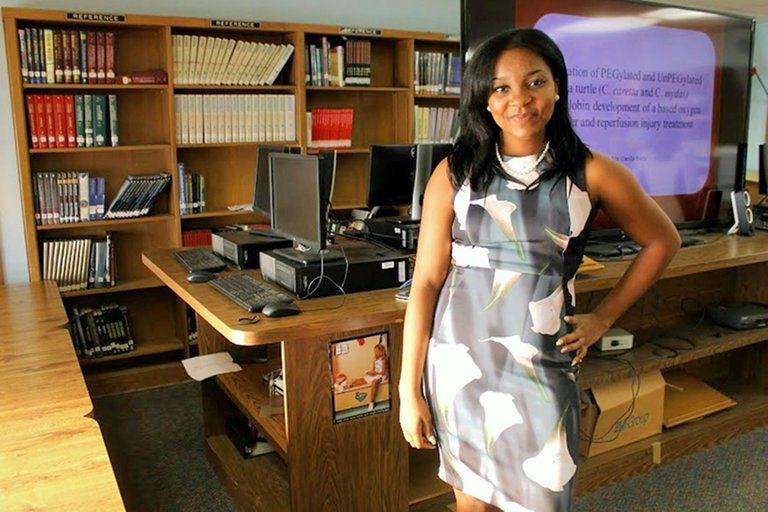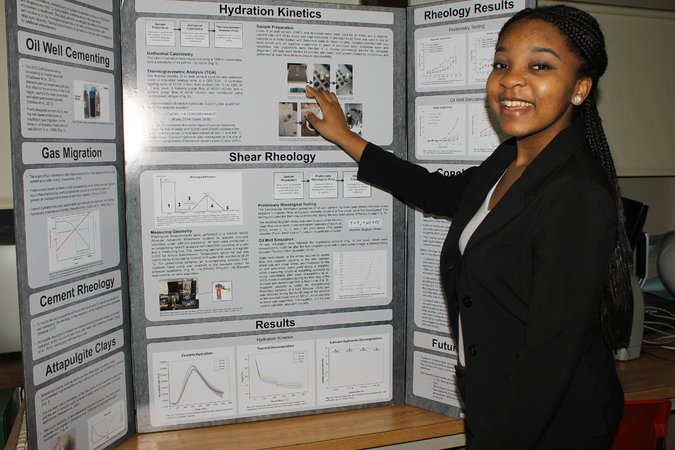
被8个常春藤名校同时录取,美国学生引发争议
一名长岛学生被全部八所常春藤盟校录取的新闻,上周在网上引发热议,许多人纷纷留言表达赞赏。
然而,当弗吉尼亚州尚蒂利的高中毕业班学生彼得·康(Peter Kang)上周在自己的Facebook上看到一篇《纽约时报》文章,从中了解到这位名叫奥格丝塔·乌瓦曼祖-纳(Augusta Uwamanzu-Nna)的学生后,他发出的是一通怨言。
“这恰恰就是导致大学录取率下降、上大学难度大幅增加的原因,”他在Facebook上写道,这番言论引起了评论栏里的一场热烈讨论。
许多学生跟彼得·康有同样的不满,其关键在于,他和他的同学们申请了太多学校,导致录取率下降,让门槛高的大学愈发显得高不可攀,从而导致更多学生去申请。
“这似乎就是一个恶性循环,”17岁的彼得·康在接受采访时说。
招生专家说,他的话不无道理。
彼得·康认为问题出在“通用申请”(Common Application)上,这种标准化的表格近年流行了起来,已经被超过600所大学采用,包括所有常春藤盟校。这份表格使用很简便,以至于许多学生会想也不想就在申请里增加一所、两所甚至10所大学。
彼得·康承认他在申请时也用了“万箭齐发”的办法。他觉得自己别无选择。“我也属于在占制度便宜的人,”他说。
他申请了21所大学,只有两所不是通过“通用申请”提交的,其中六所录取了他。他申请了所有的常春藤盟校,但全部被拒。
这样的经历让他深感气馁,不过,尽管有这些不满,他说他还是替乌瓦曼祖-纳高兴,她是一个尼日利亚移民的孩子。
“她做了跟我完全一样的事情,但她出结果了,我不会因为别人去增加概率而生气,”他说。“现在申请太方便,而且承受很大的压力,必须去申请。”
招生专家提到了一种叫做“入学申请通胀”的趋势。学生提交申请的数量之多是空前的。据大学招生咨询协会(National Association for College Admission Counseling)的统计,1990年只有9%的学生会申请七所或更多的学校。到了2013年,这个比例已经上升到32%。
但是专家还提到,大学已经开始采取行动止住这种势头。
举例来说,设想20年前乌瓦曼祖-纳只申请了四所藤校。在同等条件下,她入读一所大学的概率为四分之一。快进到现在,这个概率就降到了八分之一。
为了确保招生满员,“这些学校需要想方设法去弥补,”招生咨询协会公共政策总监戴维·霍金斯(David Hawkins)说。
他说学校的其中一个做法是录取更多的学生。它们还会更主动地去推广自己,扩大申请的基数,此外在做录取决策的时候,它们会更多地去考虑这名学生是不是真的想要入读。
一项最新调查显示,大学更看重的是所谓申请者“表现出的兴趣”,而不是成绩排名或教师推荐。
与此同时,越来越多的大学开始免除申请手续费,或向考试机构购买抢手学生的名单,向他们发出“快速申请”手续,申请者只需签名即可。
大学表示主动征召的行动是必不可少的,一方面能够触及一些原本不打算申请的学生,另一方面也能增进校内的多元化。
然而批评人士指出,这其中显然还有一个更自私的动机。
“大学喜欢大肆宣传自己的申请人数屡创新高,”纽约州波基普西市玛利亚教会学院(Marist College)的本科生招生主任肯特·莱因哈特(Kent Rinehart)说。“他们喜欢拒绝更多学生。这对它们的毕业生来说是好事,对在校生来说是好事,对学校的排名和评级也有好处。”
大学招生图景的改变给学生们带来的,是更多的困惑和焦虑,这让他们陷入一名专栏作者所说的“全国大惊慌”之中。
不过招生顾问们也表示,大多数学生有理由保持冷静。因为尽管精英院校的入学竞争变得更加激烈,但全国各地的四年制学院的平均录取率,依然非常平稳地保持在65%左右。
“这里的核心信息是,学生人数和招生名额的比例没有发生剧烈变化,”莱因哈特说。“改变的是学生们提交的申请数量。”
奥格丝塔·乌瓦曼祖-纳在周一重申,她通过“通用申请”申请全部八所常春藤盟校以及另外四所其他院校,不是为了拿到所有这些学校的入学资格,只是希望能被其中一所学校录取。
至于被这些常春藤盟校拒绝的彼得·康,他表示希望自己能在今年秋天进入马萨诸塞州伍斯特市的克拉克大学(Clark University)就读,这所学校曾诞生不少法官、商业领袖和火箭科学家。
Long Island High School Student Sweeps All Eight Ivies
By MIKE McPHATEAPRIL 6, 2016
As a Long Island high school student checked her phone for the results of her college admissions applications, she was overcome by disbelief.
One by one, each relayed the same news: Harvard. Yes. Dartmouth. Yes. Princeton. Yes. The University of Pennsylvania. Yes. Cornell, Yale, Columbia, Brown: yes, yes, yes, yes.
It was March 31, the emotion-filled day when Ivy League universities posted their decisions online. And Augusta Uwamanzu-Nna, a senior at Elmont Memorial High School, became the second student there to pull off an exceedingly rare feat: She swept all eight.
She screamed. Then she cried.
“It’s so surreal,” Ms. Uwamanzu-Nna, 17, said on Wednesday. “It’s still hard to actually believe that this has happened to me.”
The accomplishment is all the more remarkable given the increasingly fierce competition that has driven down acceptance rates at selective universities for years. Harvard’s, for example, was 5.2 percent this year, down from 9.3 percent in 2006. News reports suggest that just a few students pull off a sweep each year.
Continue reading the main story
What’s more, Ms. Uwamanzu-Nna (pronounced oo-wah-man-ZOO-nah) is just the latest student from her school to do it. In 2015, Harold Ekeh drew national headlines when he was accepted to 13 universities, including all eight Ivies.
Elmont officials said Mr. Ekeh, now a freshman at Yale, had been a huge inspiration to other students. He is also close friends with Ms. Uwamanzu-Nna.
She proposed the idea of applying to all eight universities to her counselor at the start of the school year.
“I actually encouraged her,” the counselor, Sanju Liclican, said, “because I knew she could do it.”
Many admissions advisers, however, discourage the practice.
Dean Skarlis, president of the counseling service College Advisor of New York, said that even exceptional students were better off applying to only a few Ivy League schools, along with several “probables” and a couple of safety schools.
“Just because, with their acceptance rates between 4 and 12 percent, if you put all those eggs in those baskets — most kids don’t get any if they apply,” he said. “It’s extremely competitive.”
Ms. Uwamanzu-Nna, however, had a lot going for her — a better-than-perfect grade point average, made possible by taking the hardest classes, and the distinctions of being both valedictorian of her class and a finalist in the prestigious Intel Science Talent Search.
Her scientific pedigree most likely represented a crucial advantage since universities are seeking to usher more women into the sciences, said Kat Cohen, the chief executive of the admissions counseling service IvyWise.
“She wasn’t only a very bright girl. She had real hands on science research,” Dr. Cohen said. “That definitely, definitely, definitely makes her stand out.”
Ms. Uwamanzu-Nna also presented a compelling personal story. As the daughter of Nigerian emigrants, she shared something with many of the Ivy League sweepers in recent years. They tend to have immigrant backgrounds.
American universities, especially the Ivies, have been placing greater emphasis on diversifying their student populations, admissions counselors say.
“They are very concerned about racial and ethnic diversity,” Mr. Skarlis said. “They would rather have the Latino kid from the Bronx who has overcome something significant in his life, rather than the upper-middle-class or more affluent white student.”
Ms. Uwamanzu-Nna said she was shocked to get into so many colleges: In addition to the Ivies, she won admission to Johns Hopkins University, the Massachusetts Institute of Technology, New York University and the Rensselaer Polytechnic Institute.
If Ms. Uwamanzu-Nna is favoring any one in particular, she isn’t telling. She said she wanted to pursue biochemistry and environmental science, and planned to research the 12 universities and visit their campuses soon.
It’s overwhelming, she said. “I have a really big decision to make.”
She has until May 1 to pick just one.



